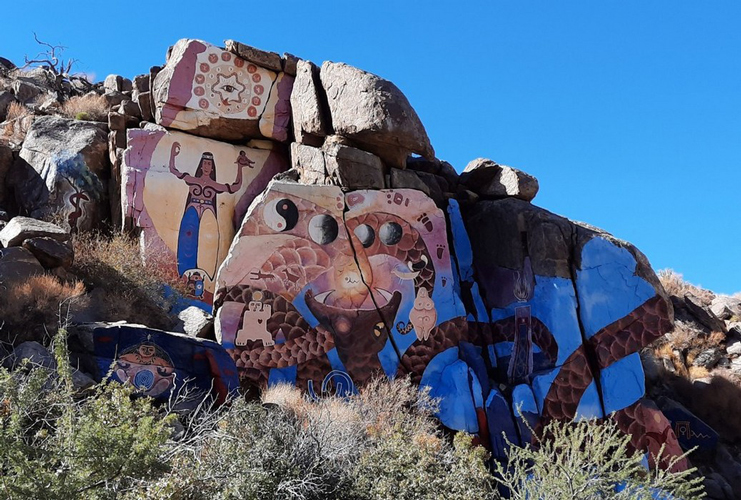 |
The
Chloride Murals and the White Cliffs Wagon Ruts
near Kingman
 |
In the 1960s, a college student by the name of Roy Purcells spent a summer working at a mine site in the town of Chloride northwest of Kingman. In his down time, Purcells painted several large murals on a vertical stack of granite boulders east of the town. Those murals have persisted and are now a point of interest for visitors to the area.
The town of Chloride was established in the 1860s and soon became a prominent mining center. For a period of time, Chloride was the county seat for Mohave County. Today, there is little evidence of current mining activity, but several hundred people still live here. We passed through in the fall of 2020, which was during the "Covid Times". There was not a lot of activity on the town's streets.
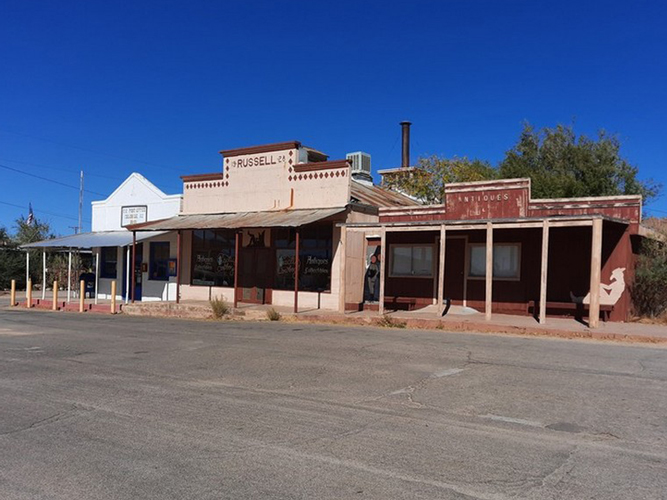 |
The vibe in the town was that this is a place that remains "old school". Many residences had signs and flags that supported Donald Trump for president. The playground equipment in the community park was like that that we played on in the 1960s.
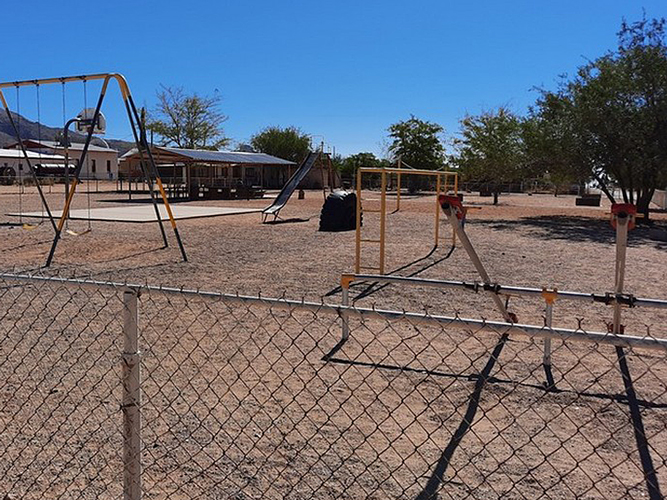 |
Interesting relics from the past are on display in the yards of many of the residences and businesses in the town.
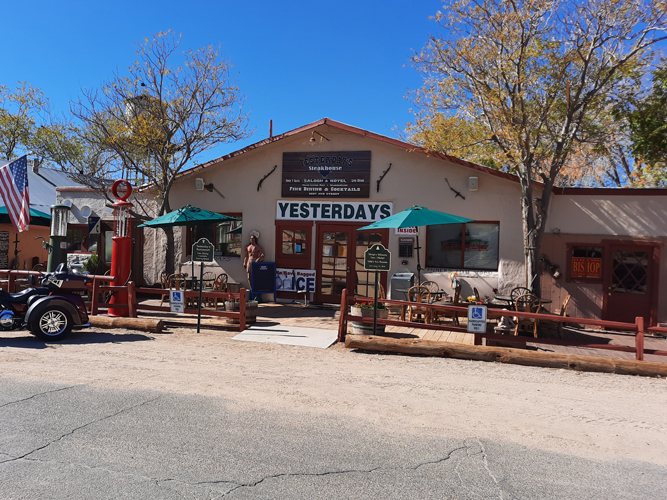 |
The murals are located in a canyon approximately 1 1/2 miles east of town. The access road is dirt. Descriptions found online of the type of vehicle needed to travel to the murals range from "4wd required" to "accessible by any vehicle". We found the latter description to be the more accurate. At the murals, parking is accomplished by finding a wide spot alongside the road.
Purcells incoporated both realistic and imaginary figures into his artwork.. One of the more realistic scenes is supposed to depict the early days of the Tennessee Mine, which was one of the major silver producers at Chloride.
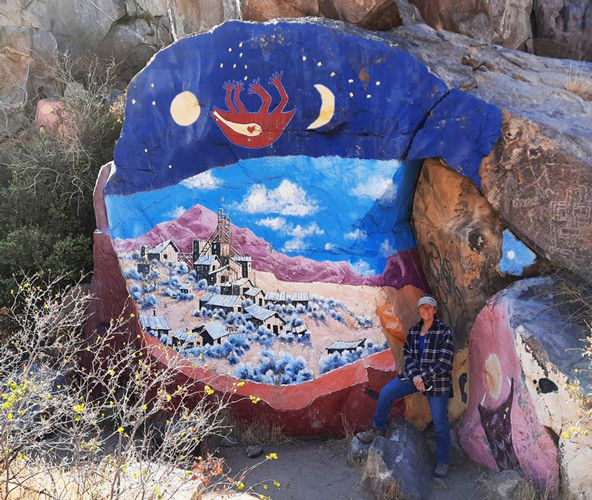 |
Among the many figures elsewhere, there are the depictions of serpents, ancient petroglyphs, and other symbols associated with a variety of cultures.
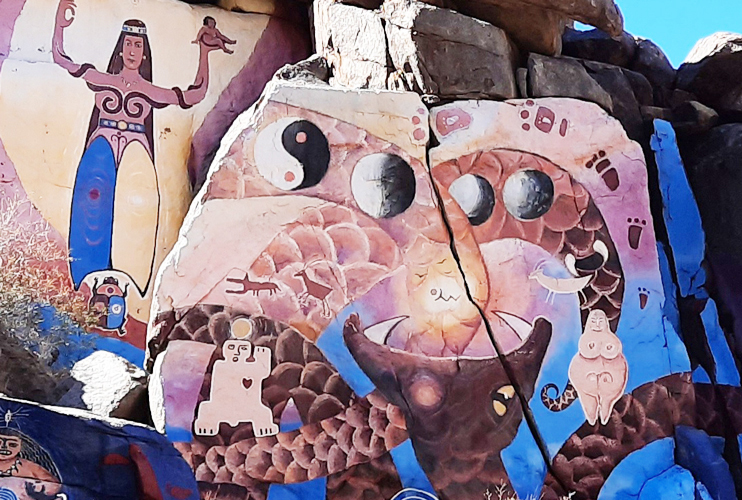 |
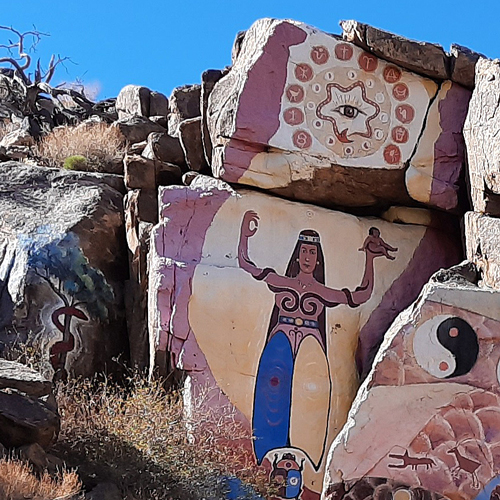 |
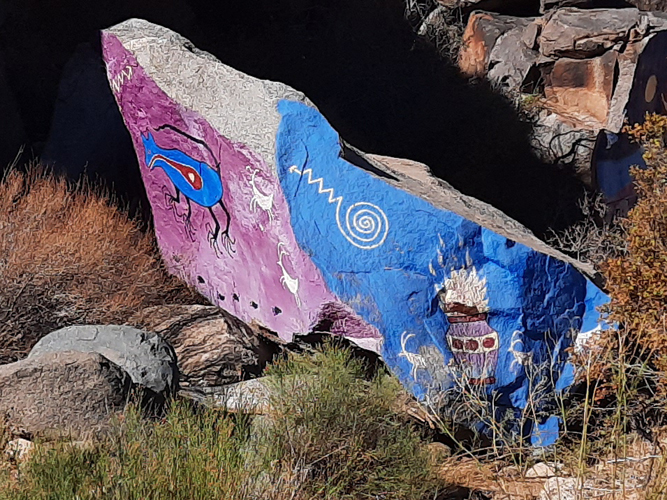 |
Together, the murals are supposed to tell a story that was related to the circumstances in the artist's life. I am not sure that the actual story has ever been completely revealed . It is interesting that the location chosen for the paintings is also the site of other artistic expressions. Ancient Indian petroglyphs can be seen on adjacent boulders
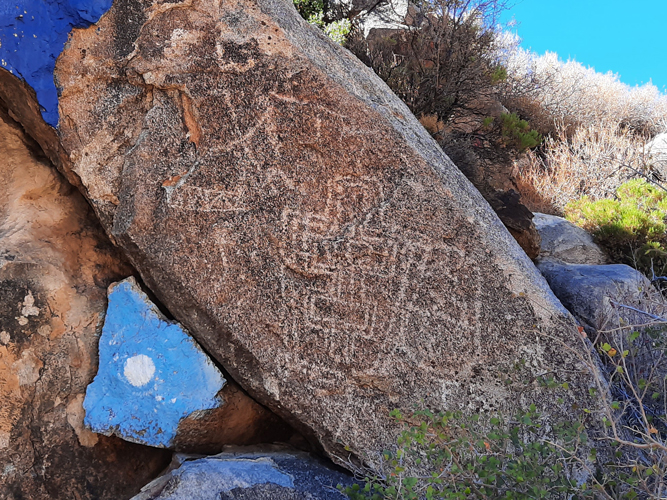 |
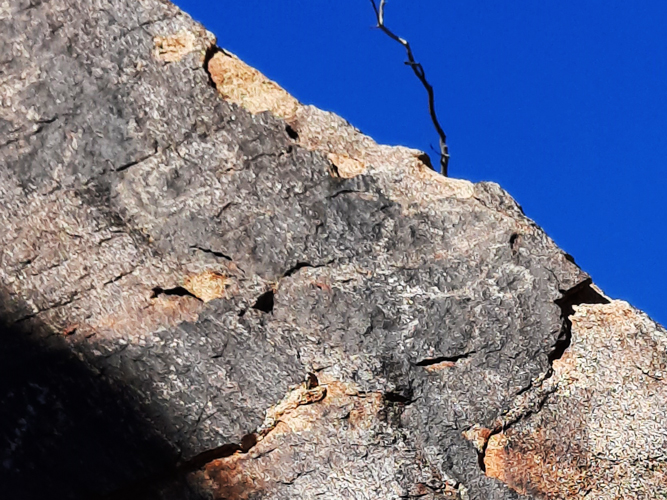 |
At the time of the creation of the murals, Purcells received monetary assistance from a benefactor. That allowed the purchase of the paint and the acqusition of scaffolding that was used to reach the upper heights. The persistence of the artwork is in part due to the high quality automotive paint that was used. Purcells has returned to the site several times in the intervening years to keep the murals in good shape.
The White Cliffs Wagon Ruts
A visit to the White Cliffs Wagon Ruts in Kingman can easily be combined with the trek to the Chloride Murals. The wagon ruts are remnants of wagon travel that occurred in the 1870s or 80s.
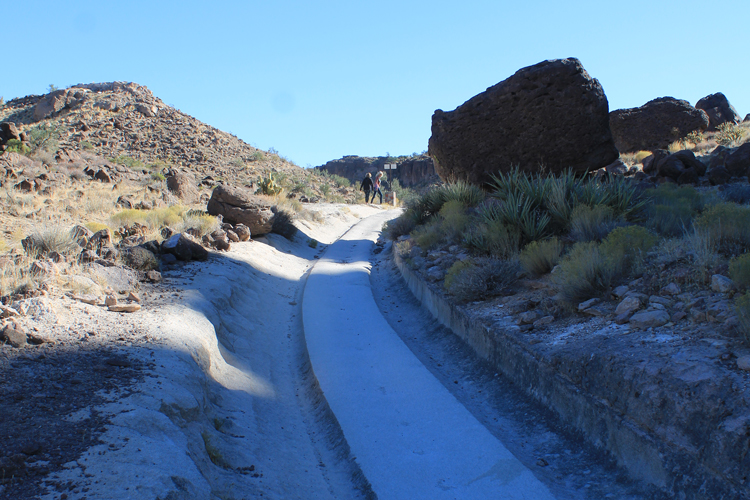 |
The history of the wagon ruts is summarized on a kiosk at the site.
 |
An interesting row of holes alongside the wagon ruts is thought to have been associated with some sort of "snubbing" system that was used to control the speed of the wagons as they descended the steep grade of the old road.
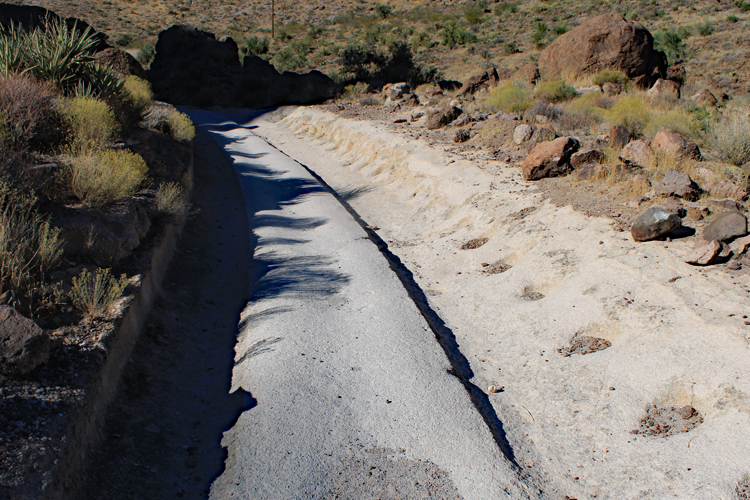 |
A small stone ruin at the base of the steep grade is thought to be the remnants of an early commercial enterprise--perhaps a tavern...
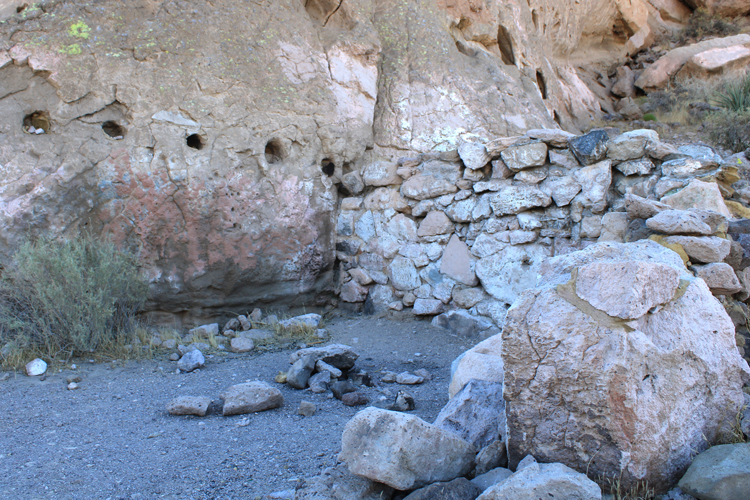 |
The wagon ruts have been incorporated into a regional park that has several miles of walking trails. The park is located at the northwestern edge of Kingman. The wagon ruts are just a few hundred yards inside the park boundary and are very easily accessible. The light colored volcanic cliffs in the background of the photo give the area its name.
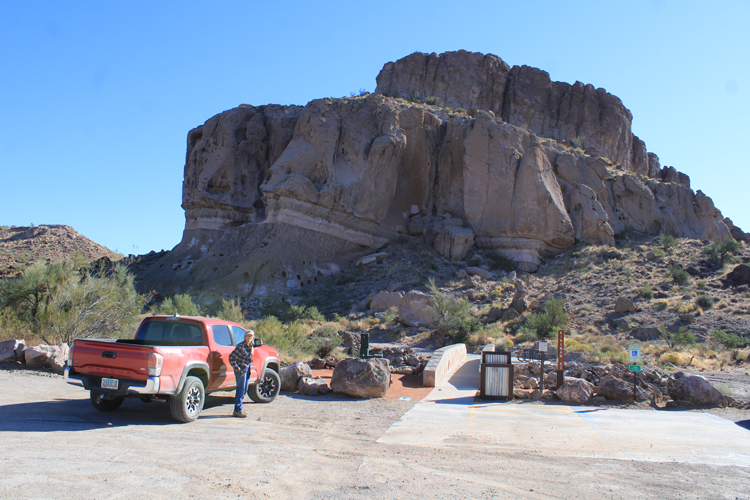 |
Our excursions to the Chloride murals and the wagon ruts were made from a base camp that we had established in a campground on Lake Mohave north of Bullhead City. With a senior pass in hand, the cost was only $10 per night. We considered that to be quite the bargain.
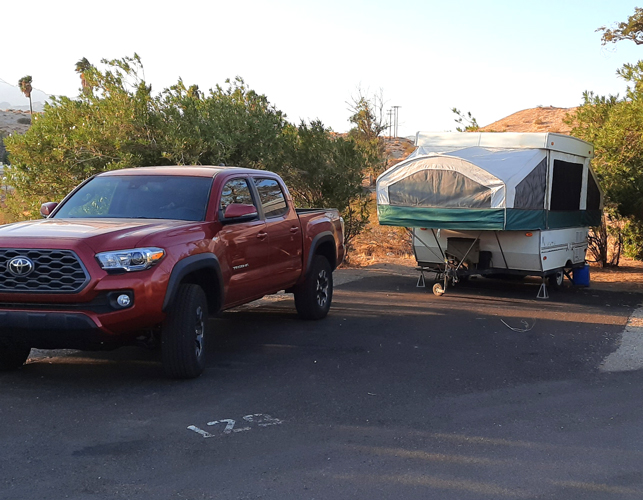 |